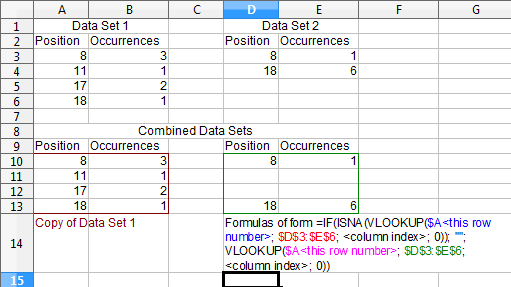4
0
If I've got two sets of data, how can I line them up in Excel 2007?
For example, if one set of data has
Position Occurrences
8 3
11 1
17 2
18 1
and another set of data has
Position Occurrences
8 1
18 6
how can I line it up so that it's
Position Occurrences Position Occurrences
8 3 8 1
11 1
17 2
18 1 18 6
rather than
Position Occurrences Position Occurrences
8 3 8 1
11 1 18 6
17 2
18 1

I'm struggling trying to figure out a slightly harder example - http://superuser.com/questions/904377/lining-up-sets-of-data-in-excel-with-different-keys. Any ideas?
– Marcus Leon – 2015-04-21T19:47:00.793I've seen this done, but not done it. If the second list is in a new sheet and sorted on the key (looks like Position), I think you can do an indexed reference. Again, I don't know how, just some hopefully useful details. – Slartibartfast – 2011-07-07T01:44:56.443
2Am I guessing right that the second set could also have data that is not found in the first? Like a row
12 4and/or a row20 3? And are the sets always ordered? – Arjan – 2011-07-07T18:19:16.667